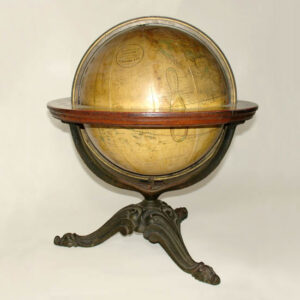Description
Although the source of the imagery in these prints has been consistently attributed to Raphael, the location of the frescoes on which they perhaps were based is unknown. Perhaps the intermediary draftsmen who designed the prints loosely based them on portions of works by Raphael and otherwise created the compositions themselves. As with the famous set of 12 Raphael’s Hours prints, presumably the frescoes on which they were based were destroyed or covered up some time in the 19th century, leaving the prints as the most celebrated and popular examples of these images. The Roman days of the week corresponding to Sunday through Saturday were Solis (associated with Apollo), Lunae (associated with Diana), Martis (Mars), Mercurii (Mercury), Jovis (Jupiter), Veneris (Venus) and Saturni (Saturn).
Raphael was one of the three greatest artists of the Italian High Renaissance and an accomplished architect as well. As chief archeologist to the Pope, he was involved in the excavation of the ancient Golden House of Nero, and adapted many of the elaborate Roman frescoes he saw there in creating his own innovative painted wall and ceiling designs in the Vatican and private villas in Rome. Prints made after Raphael’s drawings, designs and paintings were produced during his lifetime by the engraver Marcantonio Raimondi (c.1470-1482 – c. 1527-1534). Raphael prints by other engravers were especially popular in the neoclassical period of the mid 18th century and early 19th century coinciding with the tremendous revival of interest in the classical art of ancient Greece and Rome, as well as the classicism of the Renaissance. Some of these prints served as references for architects and designers because many were based on frescoes that had been incorporated into interior architecture. This interest in Raphael, often reflected in prints, continued throughout the 19th century as he achieved legendary status.
Among the more famous prints after Raphael are series from the late 18th century illustrating his frescoes in the Vatican stanze (notably Picturae Raphaelis Sanctii Urbinatis,Rome: 1722); the Vatican loggia (notably Loggia di Rafaele nel Vaticano, Rome: 1772-77) and the Villa Farnesina in Rome (notably Psyches et Amoris Nuptiae ac Fabula, Rome: 1693). One popular set, variously issued as engravings and lithographs during the 19th century, shows details of Raphael’s allegorical frescoes of 12 hours of the day and night. A related set of engravings depicts the gods and goddesses of the Roman pantheon riding in chariots in their heavenly domain, probably representing the seven days of the week.
Inscriptions below print:
Apollo: “Raffaele Sanzio d’Urbino. Franco Staccoli, disegné. Pietro Bonato Veneto incise.”
Marte: “Raffaele Sanzio d’Urbino. Stefano Tofanelli delin. Pietro Bettelini incise in Roma.”
Mercurio: “Raffaele Sanzio d’Urbino. Stefano Tofanelli delin. Pietro Bonato Veneto, incise.”
Venere: “Raffaele Sanzio d’Urbino. Agostino Tofanelli delin. Giuseppe Bortignoni Veneto incise.”
Condition: Generally very good with the usual light toning, wear, soiling, soft creases. Backside with some time toning, not noticeable from front.
Reference:
“Raphael.” The Oxford Dictionary of Art. Online at eNotes.com 2008. http://www.enotes.com/oxford-art-encyclopedia/Raphael (28 October 2008).








